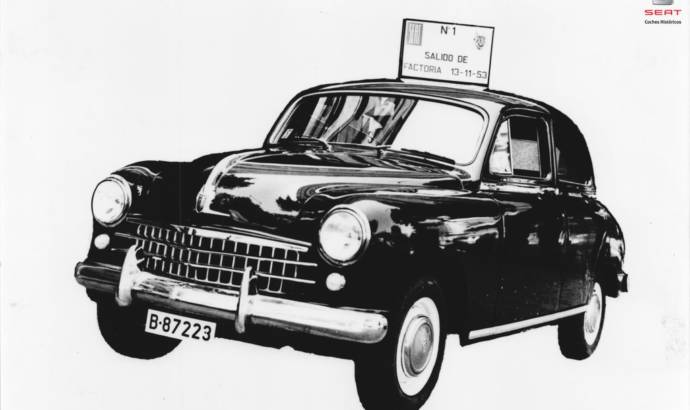It’s time for celebrations or the so called „fiesta” in Spain, as the car that launched SEAT is celebrating its 65th anniversary this year.
The SEAT 1400 marked the beginning of the brand’s story and formed the platform for its evolution.
The first SEAT 1400, with registration plate number B-87.223, rolled off the production line at the brand’s Zona Franca factory in Barcelona on the 13th November 1953, just three years after the brand had been formed.
Priced at 117,000 pesetas (around €705 or £616), the production rate was just five vehicles a day during the first year, but that number would rapidly climb.
Conceived as the vehicle to build the foundations of SEAT’s business, the 1400 was a four-door, front engine, rear-wheel drive saloon, equally at home as an official state authority vehicle or providing transportation to the masses as a public taxi.
Built at SEAT’s manufacturing plant in Barcelona, with an initial workforce of 925 employees, the 1400’s technical specifications were reflective of the period: longitudinally mounted petrol engine at the front with power delivered to the rigid rear axle which incorporated a differential.
That engine was a four-cylinder unit with a displacement of 1,395cc, linked to a four-speed manual transmission and with a maximum output of 44PS, giving it a top speed of 120km/h.
The 1400’s exterior took its design cue from American vehicles of the time, with a rounded rear shape extenuated by conical-shaped rear lights, but it also introduced curved, one-piece windscreens and a heating system to the market.
Initial production numbers were small, by the end of 1954, 959 units were delivered, however a year later annual production was tipping towards 3,000 – and the 1400 was produced with nearly 100% nationally sourced components.
In 1956 7,000 vehicles were manufactured, with that number hitting 10,000 a year later. By the end of its life, 98,978 units had been sold.



